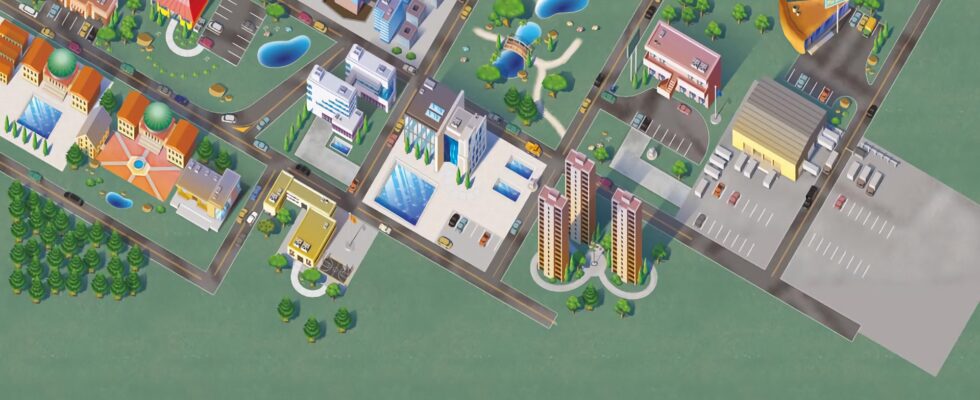Plan, build, develop: transform your small town into a flourishing metropolis. This is what Suburbia, our board game of the week. A real Sim City in a board game version.
What is the game Suburbia?
In Suburbia, each player develops his own city, a little miserable at first, since it only consists of three tiles: suburbs, a park and a factory. Each tile represents a building, a place, with different effects and characteristics. It’s up to you to develop your city and build a functioning economic engine. A game lasts about 90 minutes and you can play up to 4 players over 12 years old.
Suburbia is a game by Ted Alspach, illustrated by Brett Stebbins and Ollin Timm and published by Lucky Duck Games.
How is a game of Suburbia played?
A game turn simply consists of buying a new tile and placing it in your city. The choice is essentially made from a river of seven randomly drawn tiles, completed at the end of the round. Each tile has a cost, on average higher and higher as the game progresses.
If you are a bit short on money, or want to save for later, you can also take one of the three basic tiles, less expensive, but generally less interesting, or even a lake, for free.
Placing a tile causes an immediate effect which can be a gain or loss of income, reputations or population. Placing a tile also results in a conditional effect depending on the tile placed as well as those already present in your city, whether or not it is adjacent to the new tile. Depending on the case, this effect can re-trigger later, when another tile is placed, at home, or sometimes even at opponents.
Concretely, a landfill increases your income per installation, but decreases your reputation for each adjacent building. The primary school increases your reputation for laying, and increases your population for each residential tile already built, or to be built, in any city. Etc.
You end your turn by receiving or giving money according to your level of income. Then, we adjust its population according to its level of reputation.
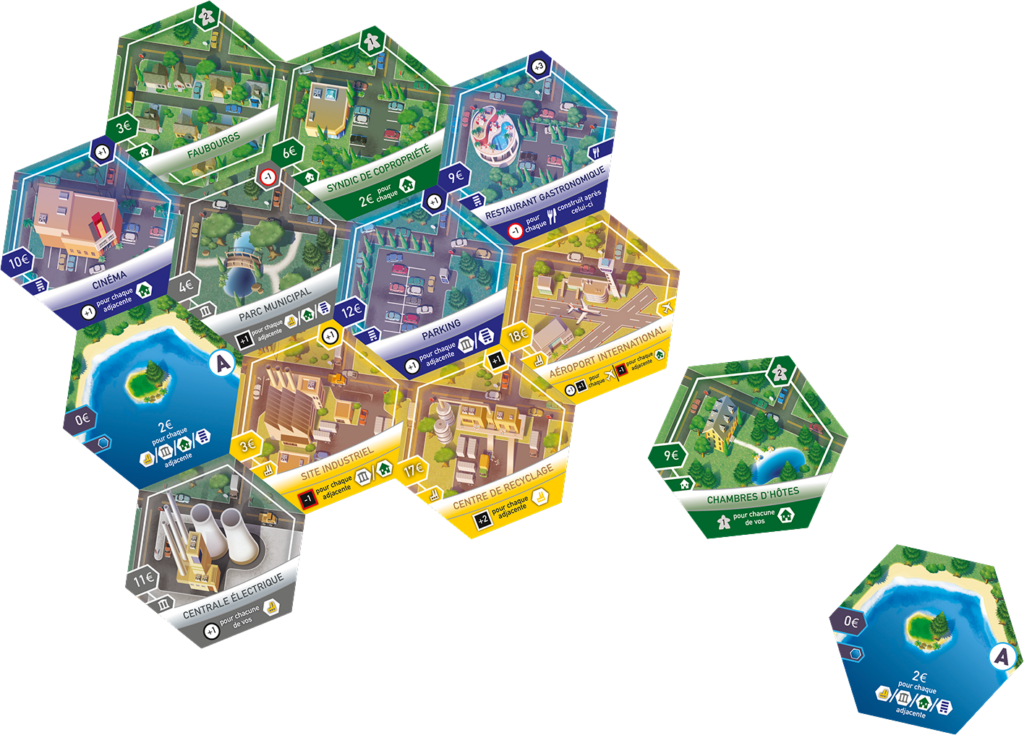
The game ends after a certain number of tiles have been revealed. We adjust its population one last time, in particular through common or personal objectives determined at the start of the game, then the player who has attracted the most people to his city wins.
Finally, note that the rules also offer two modes of solitary play.
Why play Suburbia ?
Suburbiais not a novelty strictly speaking, since a first edition was released in 2012. But we are taking advantage of the very recent arrival in French of this second version to present it to you.
This reissue is particularly welcome, first because the game was no longer available, but also because the publisher took the opportunity to rework it with larger and nicely illustrated tiles.
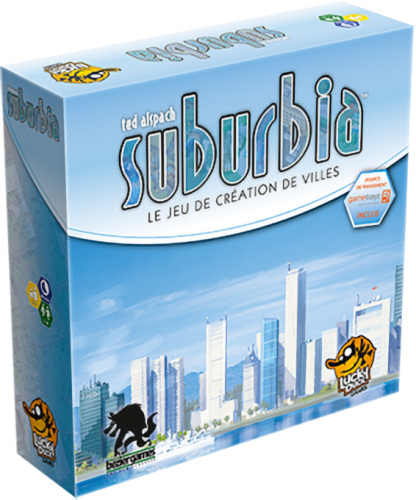
And above all, because it is undoubtedly the most popular and well-known city development game. The one that comes closest to one SimCity. In less detail, of course, since it would be unthinkable to manage all the parameters of a video game of this type “by hand”.
He manages to combine the simplicity of the rules (I place a tile, I apply its effects, to the next one…) and the richness of the gameplay . There are thus many different tiles, offering a combination of costs, effects and specific conditions.
The management and development of your city, where you try to place your buildings wisely in relation to each other, to make the most of the synergies, are then a real headache. More importantly, we must avoid placing tiles that are antagonistic to those already built in our city. Not always obvious, especially since you also have to take into account endgame objectives, which bring in a lot of inhabitants.
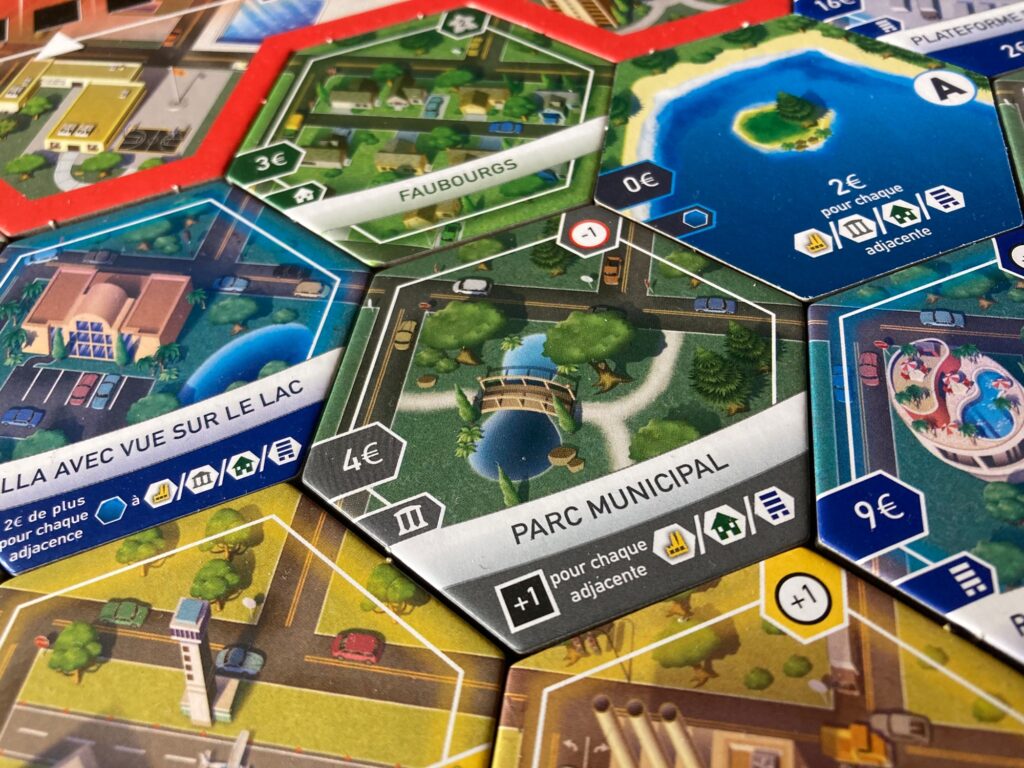
Finally, the dichotomy between the need to build an economic engine (to buy new buildings) and that of increasing its population (since it is this that determines the winner) is well rendered. Determining when to operate the switch is crucial.
But this multiplicity of effects brings its downside: the game requires concentration and attention at all times, throughout the game. As most of the effects can be retriggered depending on new tiles arriving in our city or those of other players, you have to constantly recheck all your tiles so as not to miss anything. Better to wait until the end of the game to chat or check your phone.
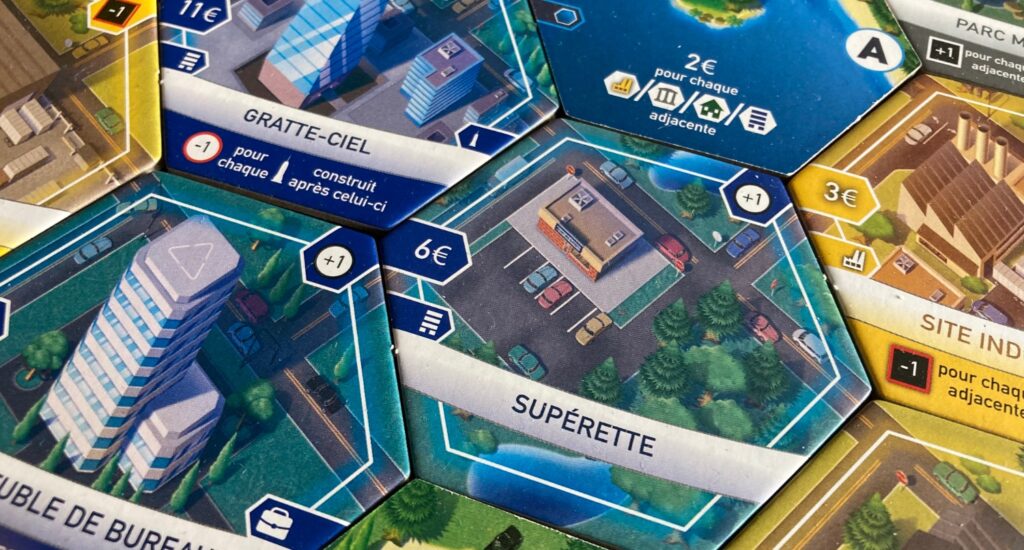
Suburbiatherefore remains one of the very best city management games, further improved by the few aesthetic changes of this second edition. Despite the simplicity of its mechanics, it offers rich, deep, and diversified parts. Impossible to embark on a ready-made strategy, it all depends on the tiles that arrive, and in what order. Simply, to take advantage of it, you have to stay focused and attentive throughout the game, in turn, but also during the turn of others.
A big extension, with many new buildings, has already been released in English. Let’s hope that the French adaptation of the game is successful enough for its translation to arrive as well.
If you liked this article, you will like the following ones: do not miss them by subscribing to Numerama on Google News.
Some links in this article are affiliate. We’ll explaine everything here.
